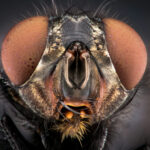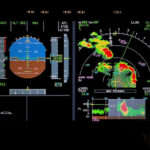Dealing with flies in your yard can be incredibly frustrating, especially when you’re trying to enjoy your outdoor space. Whether you have pets or just want to relax without constant buzzing, controlling fly populations is essential. This guide will provide you with practical steps to effectively reduce flies in your yard, focusing on methods that are safe and manageable.
Understanding Fly Control in Your Yard
Flies are attracted to yards for a variety of reasons, primarily due to decaying organic matter. Pet waste is a significant attractant, as are garbage and compost. Effective fly control starts with understanding these attractants and implementing strategies to minimize them.
Effective Methods to Eliminate Yard Flies
There are several methods you can employ to get rid of flies in your yard. A multi-pronged approach often yields the best results.
Fly Traps: A Simple Solution
Fly traps are a straightforward way to capture and reduce the fly population. Options like disposable fly traps are easy to set up and discard once full. Reusable traps are also available, requiring you to replace the attractant regularly. Placing these traps strategically around your yard, particularly near areas where flies congregate, can significantly decrease their numbers.
Sanitation: The Cornerstone of Fly Control
Sanitation is paramount when it comes to managing flies outdoors. Regularly removing pet waste is crucial. Dispose of it promptly and securely in tied trash bags, even within trash cans. Keeping trash cans tightly closed is also essential. Additionally, cleaning surfaces that might attract flies, such as sidewalks and kennel areas, is beneficial.
Bleach and ammonia solutions can be used for cleaning and sanitation. Hosing down these areas with a diluted bleach solution can help eliminate fly-attracting residues. Ammonia, in diluted concentrations, can also be used but should be applied carefully, especially around vegetation, as excessive amounts can be harmful.
Insecticides: When and How to Use Them
For more persistent fly problems, insecticides can be considered. A product like Bifen I/T, applied using a hose-end sprayer, can be effective. Treat areas where flies are prevalent, including trash cans (inside and out), lawns, and other outdoor surfaces. Always follow the product instructions carefully and use insecticides responsibly, especially in yards where pets and children are present. Be aware that scatter-type fly baits are generally not safe for use around pets due to their toxicity if ingested.
Conclusion: Consistent Effort for Fly-Free Yards
Controlling flies in your yard requires consistent effort and a combination of methods. Fly traps offer a direct way to reduce fly numbers, while rigorous sanitation practices eliminate attractants. Insecticides can provide additional control when needed. Remember, there are no quick fixes; diligence in applying these strategies is key to enjoying a fly-free outdoor environment.

